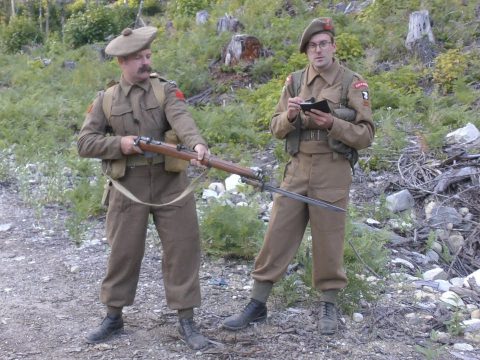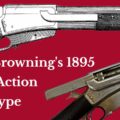The German G7e electric torpedo was made with several variants. This animation is based on the basic Type TIII, and is a revision of my Work-in-Progress video, with more detail and corrections.
The one major inconsistency is the Exploder shown in the animation, the Pi 1, was fitted to earlier models of the G7e (TI, TII) but the TIII actually carried the Pi 2 – impact and magnetic influence Exploder. Unfortunately no drawings have been found (yet) of the Pi 2, so the Pi 1 has been substituted, however the Pi 1 is an interesting design of an impact-only exploder.
The German G7e electric torpedo was probably the widest used torpedo arming the U-boat fleet during WWII. The original designs for an electric torpedo date back to 1916, and a production version was due to enter service in early 1919, but the end of the Great War and terms of the Versailles Treaty prevented Germany from manufacturing torpedoes until 1935.
Electric torpedoes, although slower and having a shorter range than an air-heater design, were cheaper and easier to build. At the start of WWII, Germany was working on a large number of different designs and propulsion systems, including hydrogen peroxide, battery and enhanced oxygen torpedoes. The principal design was the G7a – a conventional 7m long ’Whitehead’ air driven wet heater capable of 45 knots for a range of 5,000m, but this model was expensive to build and required highly skilled workers. The Electric version used used many of the same parts – gyro, depth control, warhead and pistol/exploder. However, it was only capable of 30 knots for a range of 5,000m if the batteries were pre-warmed to 30 deg C, and significantly less when launched with a cold battery. Nevertheless, it was ideal for submarine warfare.
Later G7e versions were capable of pattern running (FAT) or circling, including the ability to be set to follow and zig-zag across a convoy of ships (LUT). Acoustic homing torpedoes were also developed to home on propeller noise. I hope to be able to produce an updated animation that will demonstrate the FAT and LUT mechanisms (if I can get the manuals and drawings).
The animation illustrates the torpedo being launched from a Type VII U-Boat torpedo compartment. The actual launch mechanism is only a simple representation. It shows several of the basic principles for loading, maintaining and firing but is incomplete, inconsistent and often pure guesswork.
The animation replaces my earlier ‘Work-in-Progress ‘ video, which contains a number of inaccuracies that have been corrected (I hope) now that I have better drawings. The old version can still be viewed on this link:
https://www.youtube.com/watch?v=-Bq_uv7bsMI
The animation was made using Cinema 4D
Music tracks are:
Redemption, Revelation, Searching and October Sky,
all Copyright AKM Music, www.akmmusic.co.uk
References:
Torpedo G7a Drawings, Sept 1941. www.uboatarchive.net/G7a/G7A-Plans.htm
Mine Disposal Handbook, Part IV German Underwater Ordnance – San Francisco Maritime Park Association
‘Die Torpedos der deutschen U-Boote’ Eberhard Rösseler, 2005, ISBN 3-8132-08427
M.Dv.Nr. 688 Torpedo G7e Beschreibung, March 1940
M.Dv.Nr. 689 Torpedo G7e Zeichnungen, Sept 1943
M.Dv.Nr. 690 Torpedo G7e Bedienungsvorschrift, Nov 1941
Photographs from Mark Hessburg.
Photographs from U995, Laboe

Hi, I’m Rob, otherwise known as VBBSMYT.
I create the animations on my iMac using Cinema 4D, which I find very intuitive, and allows me to add smoke and flames, and then send the model to my trusty Render farm.
I make my models as accurate as possible through reference books and particularly good drawings. You may have seen my animations of early torpedoes and machine guns on YouTube. I enjoy finding out how things work and it has been fascinating to track the development from the late Victorian period up to World War 1.





